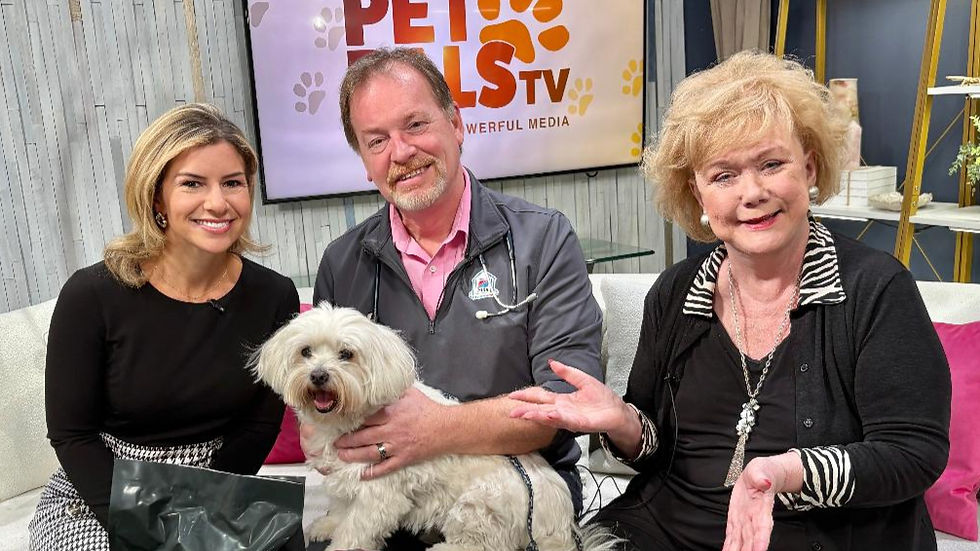Here's advice on keeping your pet's teeth healthy
- Tom Dock, Noah's Animal Hospitals

- Feb 18, 2021
- 2 min read
Updated: Feb 1, 2022

National Pet Dental Health Month every February was created by the American Veterinary Medical Association to highlight how important oral health is to overall health, happiness and wellbeing of your pet. Some people brush their pet's teeth every day, but if you don’t, you’re not alone. It’s estimated that only 2% of dog owners brush their dog’s teeth daily, despite recommendations to do so from veterinarians across the country.
Here’s some important info about keeping your pet’s teeth healthy:
1. More than 85% of our pets will have some sort of dental disease before the time that they are three years old. Small breeds, like Yorkies and Chihuahuas, may have bone loss as early as 1 year of age!
2. But, even if your pet appears to have a healthy mouth, there is still a good chance that dental disease exists. Veterinary Dentists state that dental x-rays will find pathology in 28% of dogs and 42% of cats with mouths that appear absolutely normal during routine oral examination.
3. 60% of the tooth lies below the gumline. Since our pets can’t talk to us to tell us where the pain is, these x-rays will help the veterinarian see where issues might be occurring.
4. Beyond periodontal disease, fractured teeth and mal-aligned teeth are common in dogs. Cats commonly have a condition called Feline Odontoclastic Resorptive Lesion that actually destroys tooth enamel.
5. Certain dog breeds are more prone to dental problems due to conformation characteristics, such as a shortened face or jaw. Working dogs can often experience tooth trauma during their routine workday.
6. Good oral exams and routine dental cleanings are an essential part of your pet’s wellness care. In addition, providing your pet with some sort of at home care is important to get their mouth as healthy as possible. BAD BREATH IS NOT NORMAL!!

7. A cleaning at your veterinarian’s office will involve anesthesia. There is no way to effectively clean or examine all areas of the pet’s mouth unless they are under a general anesthetic. Beware of services offering to provide “non-anesthetic pet dental cleanings”. These services make the teeth look better but do nothing to help with the overall health of the mouth.
8. Just like your regular cleaning at your dentist, the veterinary nurses will take x-rays, probe all of the teeth looking for areas of concern and chart any other pathology or issues. Then, the teeth are cleaned with an ultrasonic scaling and hand scalers, root planing can be done, and the teeth are polished with an abrasive to help remove microscopic divots and defects.
9. After all of this, a fluoride treatment and/or barrier sealant will be applied to help prolong the health of the teeth
10. At home care can be done by brushing your pet’s teeth (use a soft bristle toothbrush and pet dentrifrice, not human toothpaste) daily. Other options include various dental diets, specific dental chews or even water additives or rinses.
11. Look for the Veterinary Oral Health Council Seal on pet dental products. This organization helps provide an objective overview about how well the product may work to prevent plaque and tartar accumulation.









Comments